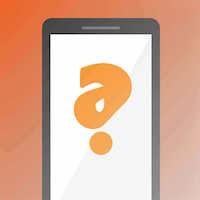
Riddle of the Rosetta Stone
Quiz by Sara Ulrich
Feel free to use or edit a copy
includes Teacher and Student dashboards
Measure skillsfrom any curriculum
Measure skills
from any curriculum
Tag the questions with any skills you have. Your dashboard will track each student's mastery of each skill.
With a free account, teachers can
- edit the questions
- save a copy for later
- start a class game
- automatically assign follow-up activities based on students’ scores
- assign as homework
- share a link with colleagues
- print as a bubble sheet
16 questions
Show answers
- Q1What three languages are on the Rosetta Stone?Greek, Latin, EgyptianHieroglyphics, French, EnglishGreek, Demotic, Hieroglyphics.Egyptian, Martian, Greek30s
- Q2Who could read hieroglyphics?Only the Pharaohs and rulers.Only Greeks.Nobody could!Only Egyptians who spoke Coptic.30s
- Q3Horapollo was a Greek who understood many hieroglyphics.TrueFalse30s
- Q4What did German priest Athanasius Kircher do to help with the deciphering of hieroglyphics?He helped Champollion get a copy of the Rosetta Stone.He correctly solved the symbols for "mother" and "family."He wrote the first vocabulary and grammar of Coptic, an Egyptian language.He dug up the Rosetta Stone.30s
- Q5A fact is something that can be proven.TrueFalse30s
- Q6Napoleon invaded Egypt and brought with him...tanks and bazookas, along with soldiers.scholars and scientists, along with soldiers.his favorite pets, along with soldiers.chefs and artists, along with soldiers.30s
- Q7Next to the statues and the head, the slab seems unimpressive at first glance. It is roughly the size of a tabletop—three feet nine inches long, two feet four and a half inches wide, and eleven inches thick. Which words in these sentences indicate an opinion?at first glanceroughly the size ofseems unimpressiveeleven inches thick45s
- Q8According to The Riddle of the Rosetta Stone, what causes the French scholars to become “tremendously excited” when they first glimpse the writing on the Rosetta Stone slab?It is the first time the French scholars have studied an inscription that consists of Egyptian hieroglyphs.It is the first time the French scholars have seen the Greek alphabet appear together with the hieroglyphs.It is the first time the French scholars have received or studied anything as old as the Rosetta Stone.It is the first time the French scholars have glimpsed the writings they have heard about on the Rosetta Stone.45s
- Q9Which sentence from The Riddle of the Rosetta Stone most suggests that James Cross Giblin holds a positive view of the work of Thomas Young?Young noticed that each time these demotic characters appeared, they were set off at both ends by lines like parentheses.However, he had laid a solid groundwork for others in their attempts to decipher the hieroglyphs.At various times, Young studied the habits of spiders, the surface features of the moon, and diseases of the chest.Unable to make fresh progress in deciphering the demotic passage, Young turned his attention to the hieroglyphs on the Stone.45s
- Q10After reading The Riddle of the Rosetta Stone, a student made this statement. Thomas Young was clearly the most intelligent and determined researcher to try to decipher the writings on the Rosetta Stone. This statement could be considered biased because itfails to mention any facts about Thomas Young.favors Thomas Young over other researchers.states two different facts about Thomas Young.views Thomas Young as an ordinary researcher.45s
- Q11Based on The Riddle of the Rosetta Stone, what is one way in which Jean-François Champollion and Thomas Young are alike?Both studied with Sylvestre de Sacy and based much of their own research on his beliefs about the Rosetta Stone hieroglyphs.Both became discouraged and almost gave up their attempts to decipher the hieroglyphs on the Rosetta Stone.Both eventually came to believe that the Rosetta Stone hieroglyphs represented sounds rather than things.Both learned many different languages in their attempts to decipher the hieroglyphs on the Rosetta Stone.45s
- Q12Based on The Riddle of the Rosetta Stone, what is one way in which Thomas Young and Jean-François Champollion differed?Champollion had money, while Young was very poor.Young gave up on his research, while Champollion did not.Champollion gave up on his research, while Young did not.Young had money, while Champollion was very poor.45s
- Q13Read the excerpt from The Riddle of the Rosetta Stone by James Cross Giblin. All his years of painstaking and often frustrating attempts at deciphering had been rewarded. "I am going to do it," he had said as a boy when the mathematician Fourier showed him a copy of the Rosetta Stone. Now he had succeeded. Based on details in the excerpt, the reader can conclude that Champollion mostly felt about his accomplishment:a sense of pride.thankful to Fourier.envious of Fourier.a sense of frustration.45s
- Q14Read this excerpt from The Riddle of the Rosetta Stone by James Cross Giblin. The schooling of a scribe began at age five or six and was usually completed by age sixteen. Through long, hard hours of practice, the student learned to paint or carve more than six hundred different hieroglyphs. He also learned how to write in hieratic, a flowing form of hieroglyphic writing in which the individual symbols were joined. Based on the context clues, a scribe can be defined as someone whocookswritesbuildsteaches45s
- Q15When making an inference, readerscombine information from a text with their own experiences.make a guess about a text based on personal opinions.prove a statement with facts gathered from research.look up the definition of a word in the dictionary.45s